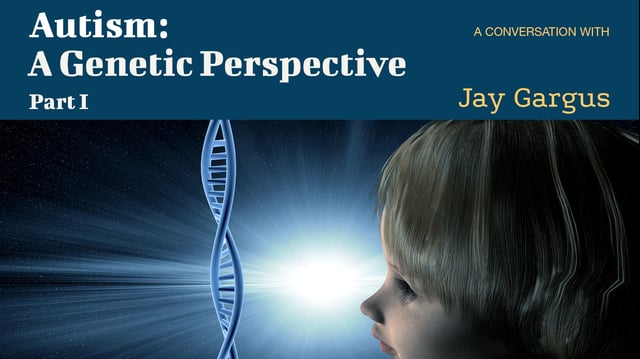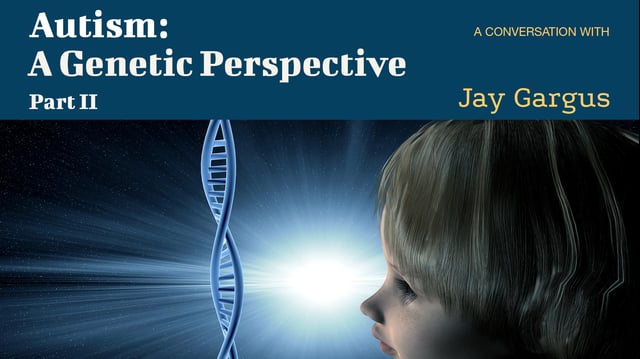
|
|
Presentations and Publications
To view presentations and publications please click on the tabs below.
International Society for Autism Research, 2018
The International Society for Autism Research (INSAR), formerly known as IMFAR, is a scientific and professional organization that is committed to advancing knowledge about autism spectrum disorders. INSAR was founded in 2001 and is governed by an elected, volunteer Board of Directors who oversee all functions of the Society. CART researchers were invited to present at this year's INSAR Annual Meeting, an annual meeting where they exchanged their recent work with ASD scientists and their trainees from around the world. The abstract and poster presented at this year's linked below.
INSAR Poster
European Calcium Society (ECS) International Meeting, 2018
The European Calcium Society (ECS) hosts biennial conferences that are attended by 250-300 scientists from all over the world who cover most of the relevant aspects of calcium signaling, channels, binding proteins, structure-function relationships and pathology, technical aspects of calcium imaging and the development of novel technologies and we have reserved an entire session for late-breaking studies. This year, CART researchers have been invited to the 15th International Meeting of the European Calcium Society in Hamburg, Germany. Their abstract on calcium signaling as a biologic marker in autism spectrum disorder is linked below.
ECS Abstract
(New) Large-exome sequencing study implicates both developmental and functional changes in the neurobiology of autism
CART researchers contribute to the largest exome sequencing study to date which identified 102 risk genes that are mostly involved in gene expression or neuronal communication in early brain development. Of these genes, 49 show higher frequencies of disruptive de novo variants in individuals with severe neurodevelopmental delay and 53 show higher frequencies in individuals with ASD. In human single-cell gene expression data, expression of risk genes is enriched in excitatory and inhibitory neuronal lineages, which is consistent with multiple paths to an excitatory/inhibitory imbalance underlying ASD.
Intracellular calcium dysregulation in Autism Spectrum Disorder: an analysis of converging organelle signaling pathways
CART researchers discuss recent genetic and biophysical evidence that points to intracellular calcium signaling as a compelling candidate in the pathophysiology of ASD. This article features molecular, cellular, and stem cell research conducted at CART that aligns with current theories involving major calcium signaling pathways that involve organellar dysfunction of the endoplasmic reticulum (ER), a major calcium store, and the mitochondria, a major calcium ion buffer.
Poor Sleep Quality Among Adolescents With ASD Is Associated With Depressive Symptoms, Problem Behaviors, and Conflicted Family Relationships
Sleep problems are very pronounced in children and adolescents with autism spectrum disorders (ASD). In a recent article, CART researchers conducted two related studies of sleep quality in association with adolescent well-being and family relationships to better understand the correlates of sleep issues for adolescents with autism. Results from these studies suggest that helping adolescents with ASD with their sleep issues may confer benefits in other parts of their lives.
Dysregulation of Neurogenic Calcium Signaling and Autism
Calcium signals culminate by initiating the fusion of synaptic vesicles into the neuronal presynaptic membrane, and the sum of the evidence is that pre- and postsynaptic membrane changes recognized in several fundamental processes of synaptic plasticity and learning are calcium sensitive and are altered in models of ASD. This is reinforced by findings in the ASD-causing Angelman, Prader-Willi, Rett, tuberous sclerosis, NF1, and PTEN lesions that converge on the calcium and metabolism sensing mTOR signaling pathway, together suggesting an inability of neurons in ASD to generate adaptive responses via calcium-regulated gene expression.
High-throughput screen detects calcium signaling dysfunction in typical sporadic autism spectrum disorder
We developed and applied a high throughput Fluorometric Imaging Plate Reader (FLIPR) assay to monitor agonist-evoked Ca2+ signals in human primary skin fibroblasts. Our results indicate that IP3 -mediated Ca2+ release from the endoplasmic reticulum in response to activation of purinergic receptors is significantly depressed in subjects with sporadic as well as rare syndromic forms of ASD.
Shared functional defect in IP3R-mediated calcium signaling in diverse monogenic autism syndromes
Growing genetic evidence supports a role of disrupted Ca2+ signaling in ASD. Here, we report that patient-derived fibroblasts from three monogenic models of ASD—fragile X and tuberous sclerosis TSC1 and TSC2 syndromes—display depressed Ca2+ release through inositol trisphosphate receptors (IP3Rs).
Channelopathy pathogenesis in autism spectrum disorders
A mounting body of evidence implies a role of various ion channel gene defects (channelopathies) in the pathogenesis of autism. Indeed, recent genome-wide association, and whole exome- and whole-genome resequencing studies linked polymorphisms and rare variants in calcium, sodium and potassium channels and their subunits with susceptibility to ASD, much as they do with bipolar disorder, schizophrenia and other neuropsychiatric disorders. Moreover, animal models with these genetic variations recapitulate endophenotypes considered to be correlates of autistic behavior seen in patients. An ion flux across the membrane regulates a variety of cell functions, from generation of action potentials to gene expression and cell morphology, thus it is not surprising that channelopathies have profound effects on brain functions. In the present work, we summarize existing evidence for the role of ion channel gene defects in the pathogenesis of autism with a focus on calcium signaling and its downstream effects.
Pharmacological profile of a 17β-heteroaryl-substituted neuroactive steroid.
This paper describes the pharmacological profile of a novel neuroactive steroid that is an improved analog of ganaxolone. The latter has been in clinical trial for the treatment of fragile X syndrome the most common known cause of autism.
Environmental enrichment as an effective treatment for autism: A randomized controlled trial.
Enriched sensorimotor environments enable rodents to compensate for a wide range of neurological challenges, including those induced in animal models of autism. Given the sensorimotor deficits in most children with autism, we attempted to translate that approach to their treatment. This report won the W.G. Marquis Award from the American Psychological Association.
Environmental enrichment as a therapy for autism: A clinical trial replication and extension.
Based on work done in animal models showing that autism-like symptoms are ameliorated following exposure to an enriched sensorimotor environment, we attempted to develop a comparable therapy for children with autism. In an initial randomized controlled trial, children with autism who received sensorimotor enrichment at home for 6 months had significant improvements in both their cognitive ability and the severity of their autism symptoms (Woo & Leon, 2013). We now report the outcomes of a similar randomized controlled trial in which children with autism, 3 to 6 years old, were randomly assigned to groups that received either daily sensorimotor enrichment, administered by their parents, along with standard care, or they received standard care alone.
Genomic and Genetic Studies in Autism Spectrum Disorders
Recent studies have revealed that segmental dosage variants, rare de novo nucleotide sequence variants and inherited rare and common sequence variants all play roles in the etiology of autism. Robinson, Neale and Hyman (2015) noted that the complexity of genetic complexity place limits on the value of clinical sequencing in most cases of autism. It is however important to note that sequencing and genomic studies have clinical value in syndromic autism.
Nuclear and Mitochondrial Genome Defects in Autism: Genomic Instability and Impact of Epigenetic and Environmental Factors
This chapter focuses on evidence for increased nuclear genome instability in autism. Duplication and deletions of specific chromosome segments leading to altered gene dosage (copy number variants CNVs) are common in autism. Additional evidence for genomic instability is the higher frequency of nucleotide mutation in nuclear DNA in autistic probands relative to siblings or controls.
Mechanism Based Approaches for Rescuing and Enhancing Cognition
Progress toward pharmacological means for enhancing memory and cognition has been retarded by the widely discussed failure of behavioral studies in animals to predict human outcomes. As a result, a number of groups have targeted cognition-related neurobiological mechanisms in animal models, with the assumption that these basic processes are highly conserved across mammals. Here we survey one such approach that begins with a form of synaptic plasticity intimately related to memory encoding in animals and likely operative in humans.
Long-term memory deficits are associated with elevated synaptic ERK1/2 activation and reversed by mGluR5 antagonism in an animal model of autism
A significant proportion of patients with autism exhibit some degree of intellectual disability. The BTBR T+ Itpr3tf/J mouse strain exhibits behaviors that align with the major diagnostic criteria of autism. To further evaluate the BTBR strain's cognitive impairments, we quantified hippocampus-dependent object location memory (OLM) and found that one-third of the BTBR mice exhibited robust memory, whereas the remainder did not.
Spaced training rescues memory and synaptic ERK1/2 signaling in a mouse model of fragile X syndrome
Recent studies have shown that short, spaced trains of afferent stimulation produce much greater long-term potentiation (LTP) than that obtained with a single, prolonged stimulation episode. The present studies demonstrate that spaced training regimens, based on these LTP timing rules, facilitate learning in wild-type (WT) mice and can offset learning and synaptic signaling impairments in the fragile X mental retardation 1 (Fmr1) knockout (KO) model of fragile X syndrome.
A map of LTP-related synaptic changes in dorsal hippocampus following unsupervised leaning
Recent work showed that unsupervised learning of a complex environment activates synaptic proteins essential for the stabilization of long-term potentiation (LTP). The present study used automated methods to construct maps of excitatory synapses associated with high concentrations of one of these LTP-related proteins [CaMKII phosphorylated at T286/287, (pCaMKII)].
Endocannabinoid signaling mediates oxytocin-driven social reward
We present evidence that an oxytocin-dependent endocannabinoid signal contributes to the regulation of social reward. The results provide insights into the functions of oxytocin, a neuropeptide crucial for social behavior, and its interactions with other modulatory systems that regulate the rewarding properties of social behavior. They further suggest that oxytocin-driven anandamide signaling may be defective in autism spectrum disorders, and that correcting such deficits might offer a strategy to treat these conditions.
Chronic ampakine treatments stimulate dendritic growth and promote learning in middle-aged rats
Positive allosteric modulators of AMPA-type glutamate receptors (ampakines) have been shown to rescue synaptic plasticity and reduce neuropathology in rodent models of cognitive disorders. Here we tested whether chronic ampakine treatment offsets age-related dendritic retraction in middle-aged (MA) rats.
Estrogen’s effects of excitatory transmission entail integrin and TrkB transactivation and depend upon ß1 integrin function
Estradiol (E2) perfusion rapidly increases the strength of fast excitatory transmission and facilitates long-term potentiation in the hippocampus, two effects likely related to its memory-enhancing properties. Past studies showed that E2's facilitation of transmission involves activation of RhoA signaling leading to actin polymerization in dendritic spines.
Cofilin Activation Is Temporally Associated with the Cessation of Growth in the Developing Hippocampus
Dendritic extension and synaptogenesis proceed at high rates in rat hippocampus during early postnatal life but markedly slow during the third week of development. The reasons for the latter, fundamental event are poorly understood. Here, we report that levels of phosphorylated (inactive) cofilin, an actin depolymerizing factor, decrease by 90% from postnatal days (pnds) 10 to 21.
Deletion of Fmr1 alters function and synaptic inputs in the auditory brainstem
Fragile X Syndrome (FXS), a neurodevelopmental disorder, is the most prevalent single-gene cause of autism spectrum disorder. Autism has been associated with impaired auditory processing, abnormalities in the auditory brainstem response (ABR), and reduced cell number and size in the auditory brainstem nuclei.



